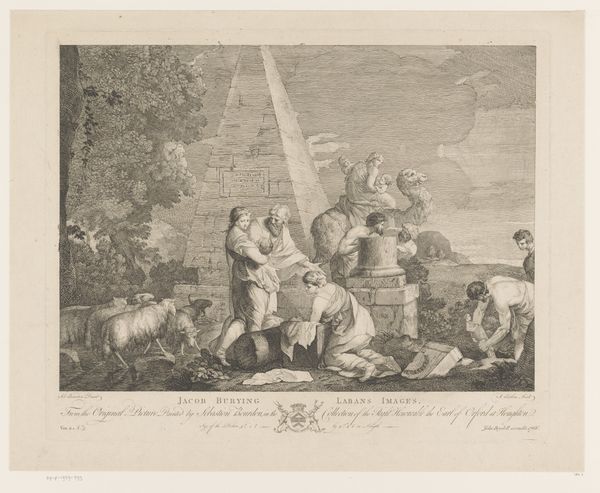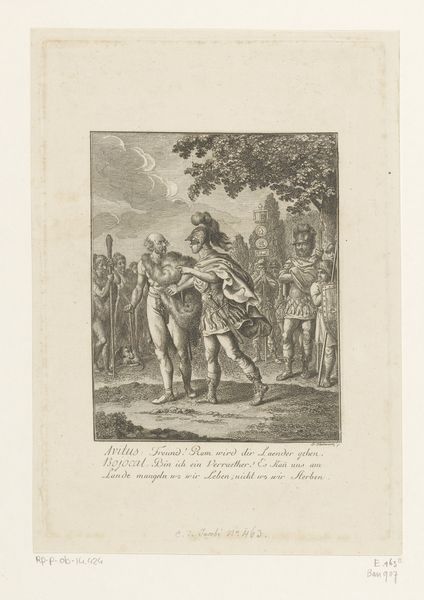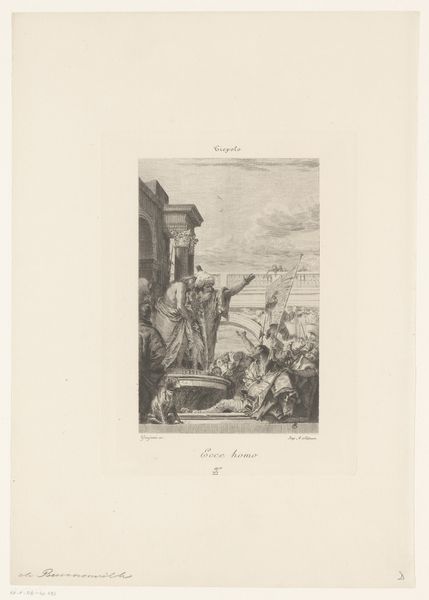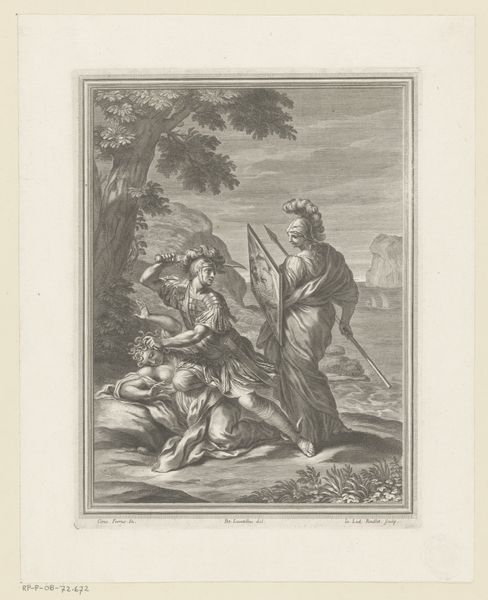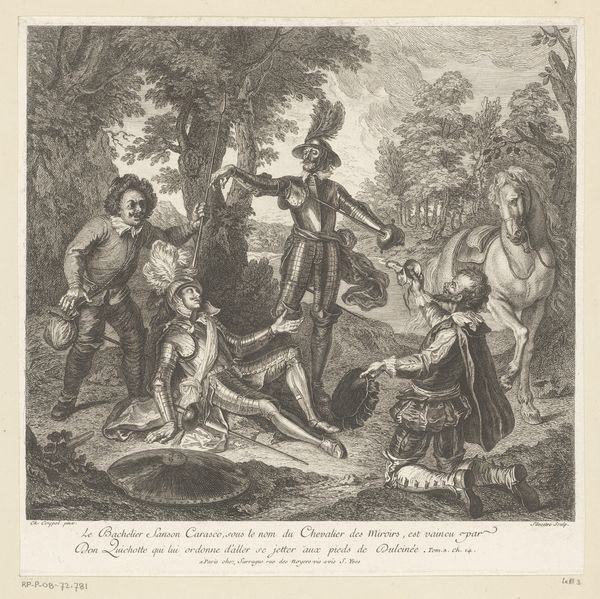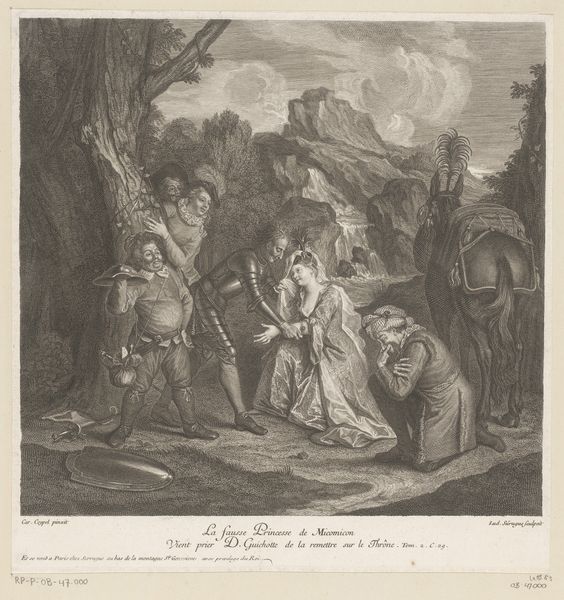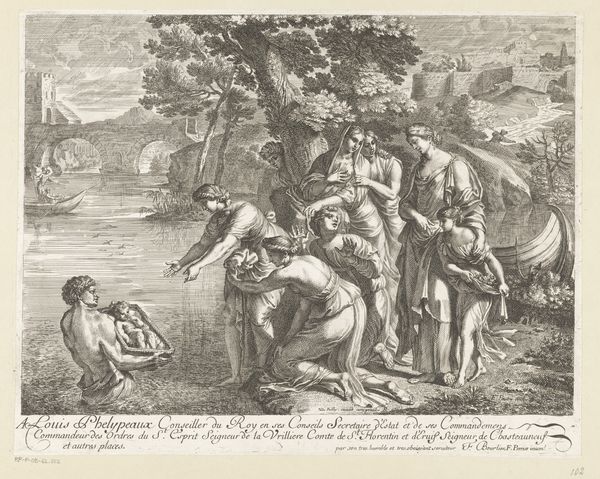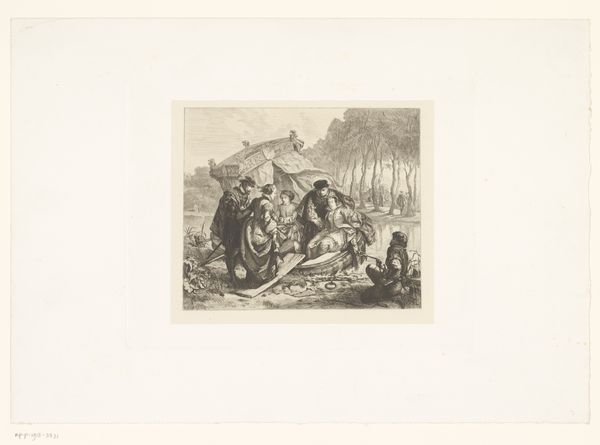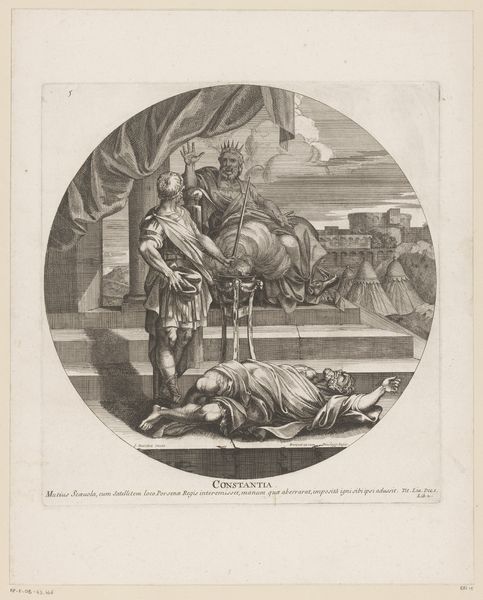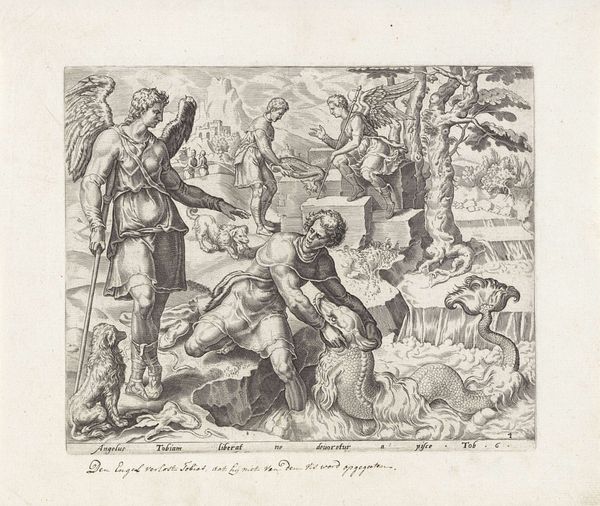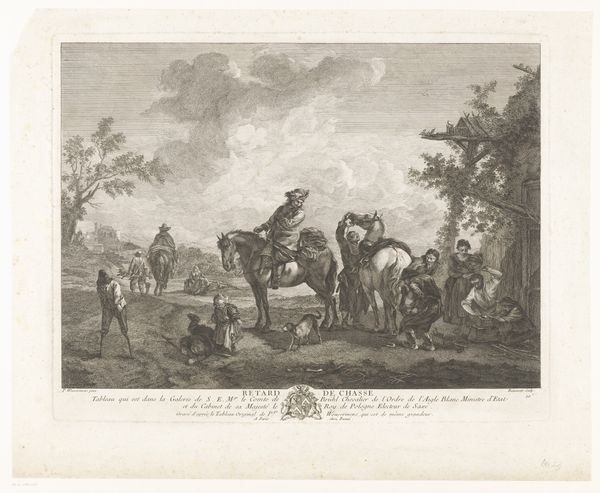
Hertog Leopold von Braunschweig gaat zijn dood in de Oder tegemoet 1785
0:00
0:00
Dimensions: height 215 mm, width 225 mm
Copyright: Rijks Museum: Open Domain
Editor: So, this is Daniel Chodowiecki’s engraving from 1785, titled "Hertog Leopold von Braunschweig gaat zijn dood in de Oder tegemoet," housed in the Rijksmuseum. It depicts a rather dramatic scene; I’m immediately struck by how staged and sentimental it feels, very much like theater. What's your take on it? Curator: Well, it’s interesting you see that theatrical quality. Consider the socio-political context of the late 18th century. Chodowiecki is presenting us with a very public image of Leopold's demise. History paintings, even in print form, played a role in shaping public memory and propagating specific narratives about leadership and sacrifice. What do you think this particular narrative might have been trying to promote? Editor: I guess it is a heroic image, showing the Duke right before his death, almost a martyrdom. It makes you think about the role of nobility. Was this meant to bolster support for the ruling class? Curator: Precisely. It is worthwhile considering that Chodowiecki was not only an artist, but an important public figure in Berlin at this time. How did the political climate influence his choices, especially when depicting such a prominent figure’s death? Consider what public function an engraving like this would serve in its time, its audience. Editor: I hadn't really considered the active role engravings played back then. I was just focused on the Romantic style of it all. Seeing it as part of a larger social conversation really changes my perspective. Curator: And, isn't that fascinating? That this seemingly simple image can be a portal into a whole world of social and political meaning? It's these layered interpretations that make studying art history so rewarding.
Comments
No comments
Be the first to comment and join the conversation on the ultimate creative platform.


